Guide to Transition Zone Grasses
BY MEL CHILDS | AUGUST 1ST, 2023 | BLOGIf you live in the middle region of the U.S., you likely live in what lawn care experts call the transition zone. In the transition zone, both warm-season and cool-season grass types can grow, but they might suffer during their dormant season. This guide will teach you how to plant and grow transition zone grasses for a healthy lawn year-round.
In this guide:
- What Are Transition Zone Grasses?
- Where Transition Zone Grasses Grow and Thrive
- Best Cool-Season and Warm-Season Grasses for the Transition Zone
- Caring For Transition Zone Grasses
- Maintenance Calendar For Transition Zone Grasses
- FAQ
What Are Transition Zone Grasses?
Transition zone grasses are those that grow well in the areas of the U.S. sandwiched between northern, cool-season grass states and southern, warm-season grass states. Transition zone grasses are a combination of both warm- and cool-season grasses.
Transition zone grasses include Bermudagrass, Kentucky bluegrass, perennial ryegrass, tall fescue, and Zoysiagrass. Some of these are warm-season grasses, which grow best in hot temperatures and typically thrive in the southern U.S. Others are cool-season grasses, which grow best in cooler temperatures and typically thrive in the northern U.S.
Since neither type of grass is well-adapted to the transition zone, they can develop issues at different times of the year. For instance, in an area that is too warm, cool-season grasses might struggle in the heat and drought of summer. On the other hand, warm-season grasses will struggle through harsh winters and especially cold fall seasons.
Where Transition Zone Grasses Grow and Thrive
The transition zone includes approximately the middle third of the U.S. The northern third of the country falls into the cool-season grass growing zone, and the southern third falls into the warm-season grass growing zone. See the map below to find out if you’re in the transition zone.
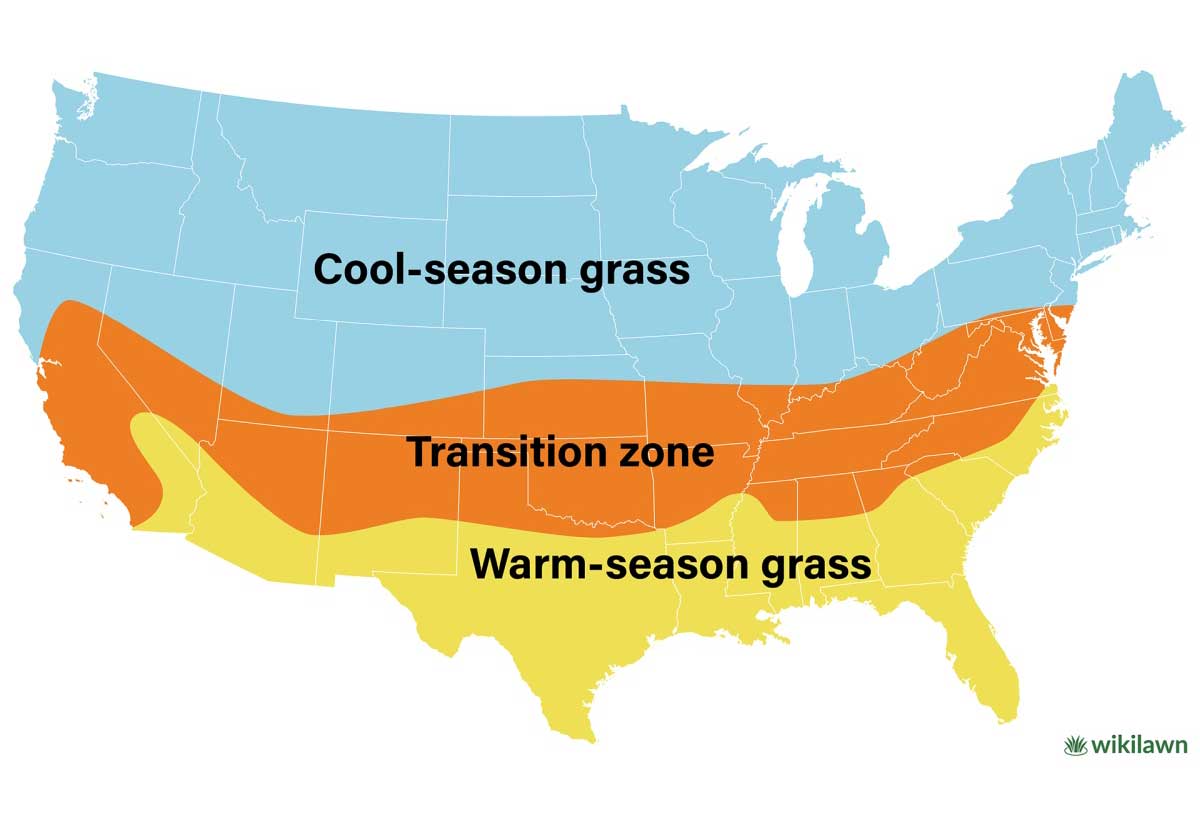
Illustration by Juan Rodriguez
Here are some states included in the transition zone:
- Arkansas
- California
- Delaware
- Kansas
- Kentucky
- Maryland
- Missouri
- Nevada
- North Carolina
- Oklahoma
- Tennessee
- Virginia
- West Virginia
Note that for some of these states, only the far northern or far southern region falls in the transition zone. It’s important to find your exact location on the map above to help you get an accurate picture of what grass types you can grow on your lawn.
Best Cool-Season and Warm-Season Grasses for the Transition Zone
The best lawns in the transition zone are usually made up of a combination of cool-season and warm-season grass types, which thrive at different times of the year. Warm-season grass will keep your lawn green and dense during summer, and cool-season grass will help your lawn stay green later into the fall when temperatures start to drop.
Cool-Season Grasses for the Transition Zone
Cool-season grasses can be found growing in northern regions of the U.S. where there are cold winters and temperatures usually average 60 to 75 degrees. These grasses endure very cold temperatures, and they stay green longer into the fall and green up sooner in spring than warm-season grasses. They grow most actively in spring and fall.
Because cool-season grasses prefer cooler temperatures, they can struggle to stay green in summer and may go dormant.
Kentucky Bluegrass
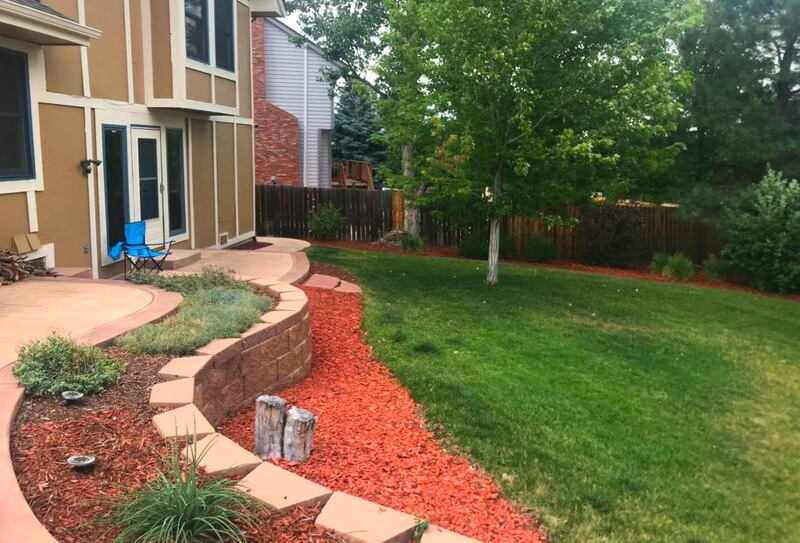
Photo Credit: Brenda Ryan / Wikilawn
This dark green, canoe-shaped cool-season grass is ideal for lawns in the transition zone, particularly those with lots of sun exposure. Kentucky bluegrass is a dense turfgrass often used on golf courses and other recreational areas. In regions where temperatures regularly get above 70 degrees Fahrenheit, this grass will go dormant in summer until temperatures cool.
- Classification: Cool-season
- Potential for disease: Moderate to high
- Foot traffic tolerance: High
- Shade tolerance: Moderate; likes full sun
- Drought tolerance: Moderate
- Maintenance needs: High
- Mowing height: 2.5 to 3.5 inches
- Spreads by: Rhizomes
Perennial Ryegrass
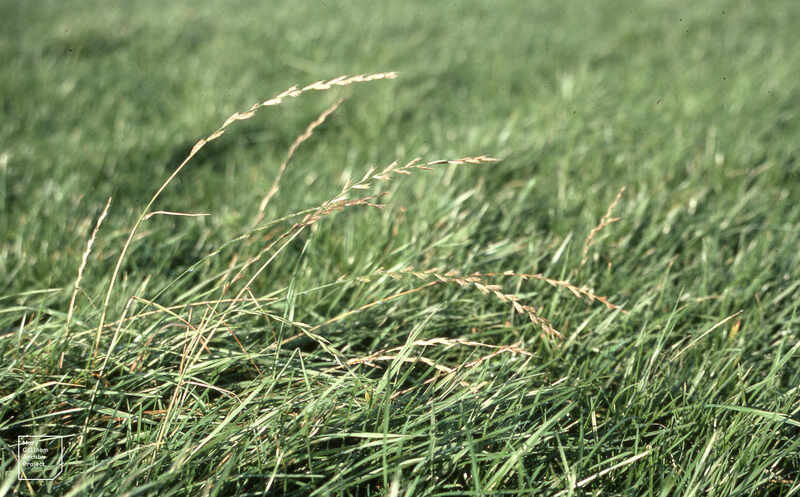
Photo Credit: Dr Mary Gillham Archive Project / Flickr / CC BY 2.0
This cool-season grass is ideal for homeowners who expect high levels of traffic in their yards. This grass is often combined with Kentucky bluegrass as a mixture. Unfortunately, perennial ryegrass is very high-maintenance and will require lots of mowing. When temperatures reach the high 70s in summer, this grass will go dormant.
- Classification: Cool-season
- Potential for disease: High
- Foot traffic tolerance: High
- Shade tolerance: Low, needs full sun
- Drought tolerance: Low, will go dormant in summer
- Maintenance needs: High, requires frequent cutting
- Mowing height: 1.5 to 2.5 inches
- Spreads by: Bunch-type grass
Tall Fescue
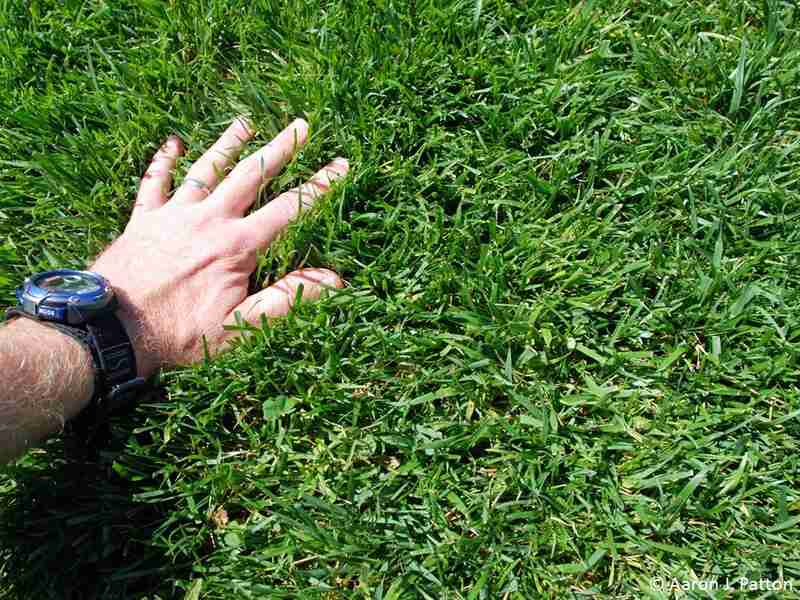
Photo Credit: Aaron Patton / Purdue’s Turfgrass Science Program
As with Kentucky bluegrass and perennial ryegrass, tall fescue is a high maintenance grass option, primarily because it grows so fast. On a positive note, this sun-loving grass handles foot traffic well. It also isn’t very susceptible to disease. When temperatures reach the mid to high 80s, this grass will go dormant until temperatures cool. It is one of the most heat-tolerant cool-season grasses.
- Classification: Cool-season
- Potential for disease: Low
- Foot traffic tolerance: Moderate
- Shade tolerance: Moderate; prefers direct sunlight
- Drought tolerance: Moderate
- Maintenance needs: Fast rate of growth; prepare to mow often
- Mowing height: 3 to 4 inches
- Spreads by: Bunch-type grass
Warm-Season Grasses for the Transition Zone
Warm-season grasses typically grow in the southern U.S. where there are hot summers, and they thrive in temperatures ranging from 75 to 95 degrees Fahrenheit. They can withstand hot temperatures and endure drought conditions much better than cool-season grasses, but they will enter winter dormancy earlier in the year.
Find the best warm-season grasses to grow in the transition zone below.
Bermudagrass
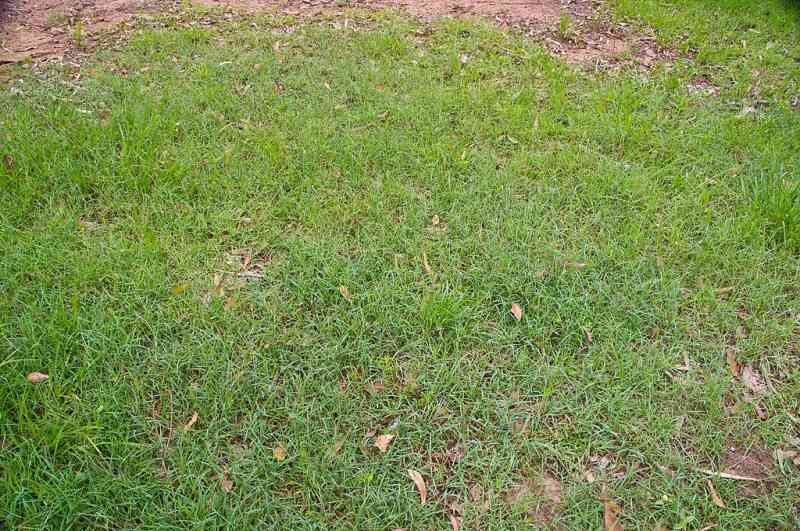
Photo Credit: John Robert McPherson / Wikimedia Commons / CC BY-SA 4.0
This sun-loving grass is able to withstand a lot of foot traffic. Unfortunately, it is very vulnerable to diseases and requires a lot of maintenance. As a warm-season grass, Bermudagrass can experience plenty of extremely hot temperatures and still grow and thrive. It can even tolerate drought well. However, this grass will fall into dormancy when temperatures remain consistently at about 50 degrees.
- Classification: Warm-season grass
- Potential for Disease: High; may succumb to dollar spot, spring dead spot, large patch, rust, leaf spot
- Foot Traffic Tolerance: High
- Shade Tolerance: Low
- Drought Tolerance: High
- Maintenance Needs: High
- Mowing Height: 1 to 1 ½ inches
- Spreads by: Rhizomes and stolons
Zoysiagrass
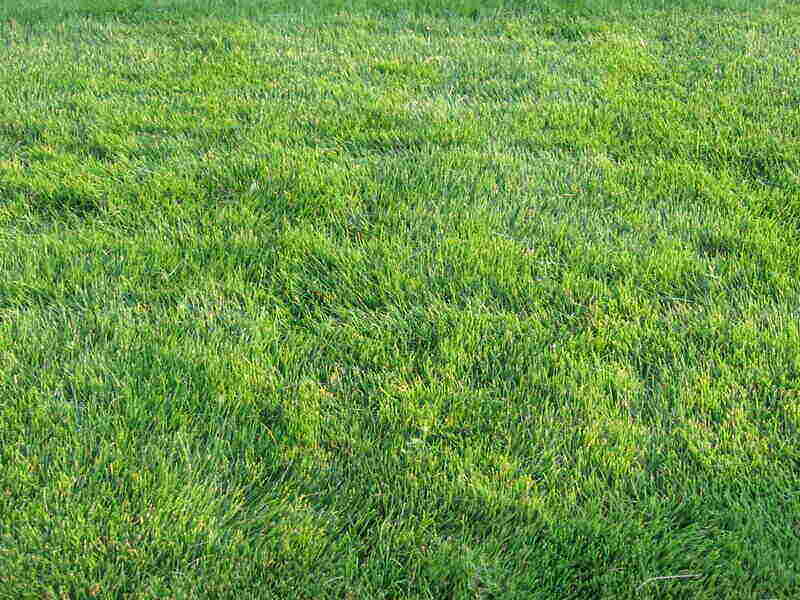
Photo Credit: Russbach at the English Wikipedia / Wikimedia Commons / CC BY-SA 3.0
Zoysiagrass is a dense, deeply rich green turfgrass that has a high tolerance for foot traffic. It is also a low-maintenance grass that can keep weeds at bay. One weak spot for this grass is that it is susceptible to various types of lawn diseases. On a positive note, because Zoysiagrass is a warm-season grass, it can withstand high temperatures and drought conditions. It tends to go dormant in temperatures below 55 degrees.
- Classification: Warm-season grass
- Potential for Disease: Moderate; may develop rust, brown patch, powdery mildew, dollar spot, pythium blight, fairy rings
- Foot Traffic Tolerance: High
- Shade Tolerance: Low to moderate
- Drought Tolerance: High
- Maintenance Needs: Low to moderate (requires moderate mowing)
- Mowing Height: 1 to 2 inches
- Spreads by: Rhizomes and Stolons
Caring For Transition Zone Grasses
Caring for transition zone grasses isn’t much different than caring for cool-season grasses in cooler regions or warm-season grasses in warm regions. The same strategies for irrigation, weed control, pest and disease treatment, fertilization, and mowing should be employed depending on what type of grass is in your yard. Here are some basic lawn care tips to keep in mind when caring for both cool and warm-season grasses.
- Water grass early in the morning, preferably before 8 am, particularly in summer, to minimize evaporation of water during the warmest part of the day.
- Fertilize your lawn every four to six weeks, but don’t overfertilize grass, as this could damage it. Only fertilize grass during its active growth period, which means late spring and summer for warm-season grasses and spring and fall for cool-season grasses.
- Use the ⅓ rule when cutting your grass during the growing season. In other words, don’t cut off more than ⅓ of the grass’s height when mowing to avoid scalping it, especially during summer.
- Aerate and dethatch your lawn if it seems that it’s not getting enough nutrients.
- Get on a regular weed control schedule that includes both pre-emergent herbicides and post-emergent herbicides.
- Use an insecticide to keep pests out of your grass, particularly lawn grubs.
- Consider overseeding your lawn if you have recently experienced lawn disease or have burned your grass from overfertilizing it. Kentucky bluegrass is an excellent grass seed to use for overseeding.
- Water your lawn deeply and infrequently, about once a week, to promote a healthy root system and avoid overwatering. Try to ensure your grass gets 1 to 1.5 inches of water each week from irrigation and rainfall.
Maintenance Calendar For Transition Zone Grasses
Caring for grass in the transition zone can be tricky because you may have a cool-season or warm-season grass in your yard, and the best time to perform lawn maintenance tasks varies for each.
So, before starting with a maintenance routine, it’s important to know what type of grass is in your yard. Once you know you have warm-season or cool-season grass, you can proceed with seasonal maintenance.
Spring
In spring, both cool-season and warm-season grasses will start to green up after winter dormancy. Once your grass greens up and starts growing again, it’s time to start mowing and fertilizing regularly.
Cool-season grasses typically start to green up in early spring, while warm-season grasses wait until late spring when the soil warms up a bit. Because it is the beginning of the growing season, late spring is the best time to plant new warm-season grass seeds. It is also the best time to aerate and dethatch warm-season lawns.
Summer
During summer, irrigation will be critical for your transition zone grass, particularly cool-season grasses, which struggle in heat and drought conditions. Water your lawn with about 1 to 1.5 inches of water each week, skipping weeks with rainfall. For cool-season grasses, you may need to increase the frequency of your watering sessions.
However, if your cool-season grass goes dormant in summer, excess water will not help it but will encourage weeds, pests, and lawn diseases. Dormant cool-season grasses may turn brown, but that doesn’t mean they’re dead. Avoid fertilizing them, as fertilizers do nothing for dormant grass.
On the other hand, summer is warm-season grass’s time to shine! This is when these grasses grow most actively, so you will need to mow your lawn at least once per week and maybe more during summer.
Fall
Once autumn sets in, warm-season grasses will begin to slow their growth, while cool-season grass growth will start to pick up the pace. Fall is the best time to aerate, dethatch, and seed cool-season grasses. You can also fertilize them once in early fall and again in late fall with a specialized fall lawn fertilizer.
You should not aerate, dethatch, or plant warm-season grasses in fall, as they are preparing to enter dormancy and need to rest. You can fertilize them in early fall, but be sure to use a low-nitrogen fertilizer designed to help grass through the winter. As the temperatures cool, you can also lower the amount you water your lawn.
Winter
During winter in the transition zone, most grass types will go dormant, whether they are warm-season or cool-season types. Don’t mow or fertilize the lawn during winter dormancy, and do your best to avoid walking or driving on the lawn during this time. The best thing you can do for your grass during this time is leave it alone.
Instead of working on your grass, take this time to winterize your lawn equipment, including lawn mowers, weed eaters, and sprinkler systems.
FAQs About Transition Zone Grasses
How Can I Choose The Right Grass For My Transition Zone Yard?
Pay attention to how much sun your yard gets, and choose a grass type that thrives in the right level of sun exposure. For example, if your yard is full of huge shade trees, a sun-loving grass like Bermuda probably won’t grow very well for you.
Another thing to think about is the maintenance level you’re comfortable with. How much work are you willing to put into your lawn? If the answer is “not much,” you should choose a low-maintenance grass that will still look great even if you don’t do much to help it.
How Can I Find My Plant Hardiness Zone?
A quick way to determine which hardiness zone you reside in so that you can discover the best plans and grasses to grow is by typing your zip code into the USDA Plant Hardiness Zone Map.
Are Transition Zone Grasses More Prone to Dormancy?
Yes. Grasses in this region may experience dormancy more than in northern or southern regions because the summers are typically hot, which leads to cool-season grass dormancy, and the fall seasons are typically chilly, which leads to warm-season grass dormancy.
Help Caring For Your Transition Zone Grass
Not everyone was born with a green thumb. And even if you have a knack for planting and growing grass successfully, this doesn’t mean you have the time to do it properly – especially if you live in the transition zone, where lawn care is fraught with challenges. For help maintaining your transition zone lawn so it always looks its best, contact a local lawn care pro to schedule regular maintenance on your lawn.